Culture wars: What's new in the yogurt aisle
By Lindsay Moyer & Jolene Mafnas
Five years ago: regular or Greek?
Today: Greek or Icelandic? Almond or “cashewgurt”?
Whole or “ultra-filtered“ milk? With or without toppings to “flip” and mix into the tub?
The dairy aisle features a growing herd of yogurts. But it’s still tricky to spot a good-tasting ‘gurt that’s not sugar laden. Here’s our take on the latest yogurt trends...and some can’t-miss newbies.
A ‘Gurt Guide
You’re looking for a low-fat yogurt that’s light on the added sugar. Our criteria, based on a 5-to-6 oz. container:
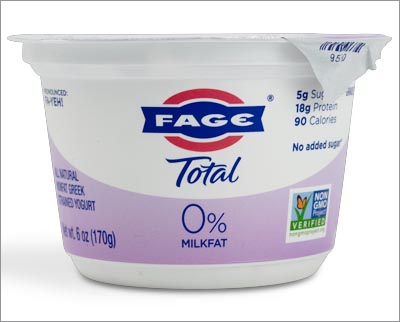
Added sugars. None (in our Best Bites). They have no added sugars in their ingredients list. We couldn’t set a limit for Honorable Mentions because too few containers bear the new Nutrition Facts label, which discloses the amount of both added sugars and total sugars (including milk or fruit sugar).
Want a rough estimate? Assume that any more than 4 to 6 grams of sugar (1 to 1½ teaspoons) in Greeks and 8 to 10 grams in non-Greeks is added.
Calories. No more than 140. A calorie limit helps cap the added sugars in our Honorable Mentions.
Saturated fat. No more than 2 grams. So non-fat (0%) or low-fat (1% or 2%) yogurt is okay, but not whole milk (3% and up) yogurt. We allowed up to 2.5 grams of sat fat in larger (7 oz.) yogurts.
Low-calorie sweeteners. No unsafe aspartame or sucralose or poorly tested acesulfame potassium. Some yogurts use (safe) stevia leaf extract and erythritol.
Protein. At least 6 grams. That’s how much you get in the best non-Greeks. Greeks have at least twice that much because they’re strained to remove liquid.
Calcium. At least 10 percent of the Daily Value. Non-Greeks often have 15 to 20 percent, but most Greeks have just 10 to 15 percent (they lose some calcium when they’re strained). We set no vitamin D minimum because many companies don’t make their yogurt using fortified milk.
Click here to see a chart of our Best Bites, Honorable Mentions, and other yogurts.
Slashing Sugar
Plain yogurt isn’t for everyone. And most light yogurts add acesulfame potassium and sucralose.
Fortunately, we found half a dozen better lines that don’t top two teaspoons of total sugar per container. Our tasters’ two favorites:
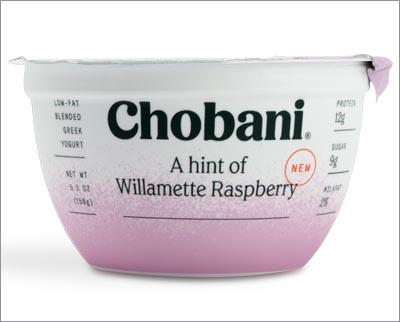
Chobani Greek A hint of. With fruit purée (no whole pieces) and just “a hint of” sugar, it’s “subtly sweet.”
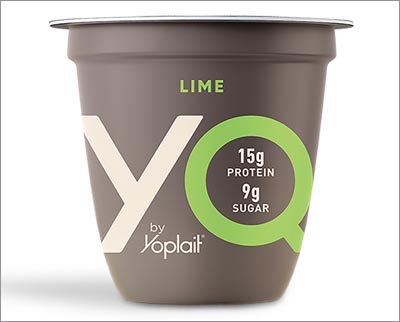
YQ by Yoplait. YQ is made from “ultra-filtered” milk, which concentrates its protein and removes most of its lactose (milk sugar). That delivers lower-sugar, high-protein yogurt “without the tart tang” of Greeks.
Three other lines slash sugar even more, but some people noticed a slight aftertaste from their erythritol and/or stevia extract:
Elli Quark 0%. Elli makes a dozen varieties of no-sugar-added quark—a fresh cheese made with cultured milk that mimics Greek yogurt.
Dannon Oikos Greek Triple Zero. The Triple Zero means no fat, artificial sweeteners, or added sugars.
Dannon Light & Fit Greek Zero Artificial Sweeteners. Dannon adds just a few grams of sugar to soften the taste of its stevia extract.
Don’t like sweet yogurt?
Siggi’s No Added Sugar adds banana and cinnamon or peach and mango instead of sugar or stevia. Both varieties are whole milk, but the petite size (4.4 oz.) packs only 2½ grams of saturated fat.
Want non-Greek yogurt?
Chobani Smooth has 3½ teaspoons of total sugar. That’s not too shabby for a non-Greek.
The Whole Truth
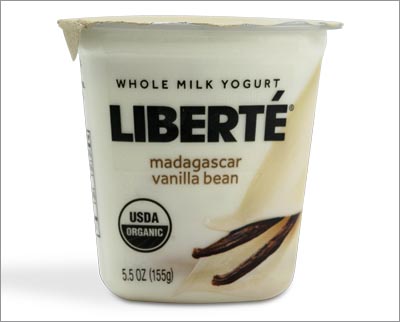
“You may think that low-fat yogurt is healthier, but what you’re really doing is increasing the amount of sugar in your diet,” claims verywellfit.com.
Nope.
What you’re really doing if you choose full-fat (whole milk) yogurt over low-fat is increasing the calories and saturated fat in your diet.
Added sugar levels depend on the yogurt, not the fat. A plain fat-free Fage Total 0%, for example, has no more naturally occurring sugar than a plain full-fat Fage Total 5%.
And a sweetened Fage 0% split cup—the kind with a side of syrupy fruit—has the same amount of sugar as a Fage 5% split cup. But the Fage 5% has an extra 50 calories and 4½ grams of saturated fat.
Heads up: Many “whole milk” yogurts add extra cream. That’s how a sweetened Liberté Madagascar Vanilla Bean (5.5 oz.) reaches 220 calories, 7 grams of sat fat (a third of a day’s worth), and an estimated 3½ teaspoons (14 grams) of added sugars—as much as ⅔ cup of Breyers French Vanilla Ice Cream.
Beyond Greek
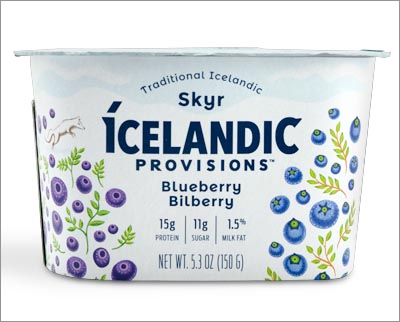
Can’t get enough of Greek yogurt’s thick texture and high protein? Say hello to Icelandic skyr (it’s pronounced “skeer”).
“Similar to yogurt, skyr is a cultured dairy product born in Iceland,” says Icelandic Provisions. “The original cultures we use to make our skyr impart a rich, creamy flavor, whereas yogurt cultures may provide a sour, tart taste.”
Indeed. Our taste-testers raved about the company’s skyr, which comes in fruit-forward, tongue-twisting flavors like Blueberry Bilberry, Cherry Black Currant, and Strawberry Lingonberry.
Every Provision flavor except Coconut is an Honorable Mention, with 15 grams of protein and 15 percent of a day’s calcium for a mere 130 calories, 1 gram of saturated fat, and 2½ teaspoons of sugar per 5.3 oz. tub.
Those numbers are nearly identical to fellow Icelandic skyr Siggi’s 2%, which is a tad more tart.
Skyr we come!
Ditching Dairy?
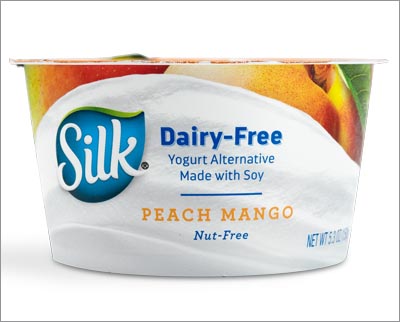
Many dairy-free yogurts didn’t wow our taste buds. But at least you can find enough protein and calcium if you search:
Soy. With 6 grams of protein and 20 percent of a day’s calcium in 5.3 oz., every soy Silk flavor got an Honorable Mention. Silk also fared best in our taste tests. (Stonyfield Organic soy yogurt has about a teaspoon more sugar and half the calcium of Silk.)
Pea Protein. Compared to other non-dairies, Ripple Greek is one of the highest in protein, but it didn’t impress our tasters.
Almond or Cashew. Protein ranges from a measly 1 to 3 grams (Almond Dream, Forager Organic Cashewgurt) to a decent 5 or 6 grams (Silk Almondmilk) to a hefty 10 or 11 grams (Kite Hill Greek-Style).
Coconut. Most coconut milk yogurts have virtually no protein and 2½ to 5 grams of sat fat. Co Yo—which uses only fatty coconut cream—packs 320 to 390 calories. Yikes.
Mix It Up
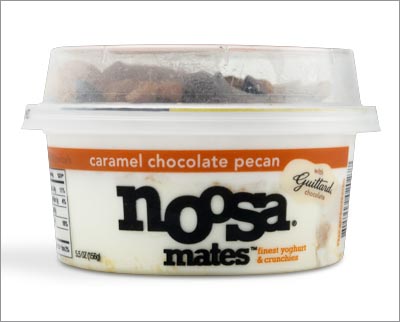
Nearly every yogurt-maker now has a “mix-in” line like the original, Chobani Flip. But healthy toppings are still scarce. A few examples, from least to most calories:
Dannon Light & Fit Greek Crunch. About half of its 130 calories come from artificially sweetened yogurt, with the other half from mostly candy or white-flour junk (like graham crackers, cookie pieces, or fudge-covered pretzels). Don’t bother.
Dannon Oikos Protein Greek Crunch. Its sugar (2 teaspoons) and protein (17 grams) beat regular Dannon Oikos Greek Crunch because its yogurt is sweetened with stevia and its “crunch” contains soy protein isolate.
Siggi’s Simple Sides. The sides—like nuts and dried fruit—are admirable, but the yogurt is whole milk.
Noosa Mates. Sweetened whole milk yogurt with a bevy of chocolate chips, pretzels, nuts, and/or granola means 230 to 270 calories and 4½ to 6½ teaspoons of sugar.
Got some fruit, pistachios, toasted almond slivers, or muesli? Why not make your own “mix-in”?
Photos: JJAVA/stock.adobe.com (top), Yoplait (YQ), Jolene Mafnas/CSPI (all others).
Continue reading this article with a NutritionAction subscription
Already a subscriber? Log in

